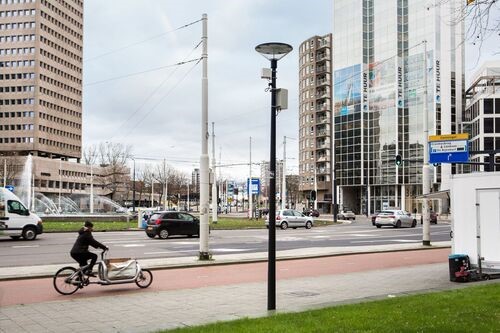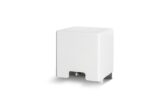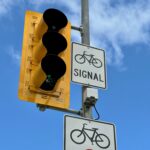
The FlowCube optimizes all traffic using AI
Methods to detect cars for monitoring traffic movements have existed for decades. However, until now, there has been no ready-made solution for cyclists and pedestrians. Technolution has developed an intelligent traffic sensor that counts pedestrians and cyclists, can provide density indications, and even calculate routes and travel times. This is done using AI.
The traffic sensor, called the FlowCube, uses computer vision and operates based on artificial intelligence. FlowCubes can be installed at various locations in the city. With multiple sensors in the city, the routes and travel times of cyclists or pedestrians can be calculated. “Vision AI has now matured,” says Michael Dubbeldam of Technolution. “We have a lot of experience with this: not only in a laboratory but also in real-world settings—in cities. If a municipality only wants to map cyclist flows, you need about five to ten FlowCubes. For a complete picture of the city, it would be closer to twenty.”
Privacy
The product is designed with a focus on privacy. “A typical challenge of AI is that while it works fantastically in the lab, it can be difficult outside of that setting. There is the danger of it being a ‘black box’ where you don’t know exactly what’s happening.” However, the product complies with all privacy guidelines. Sensor images cannot be viewed, the system works with anonymized match codes, and only aggregated data is stored. “With that code, it’s not like: this is that person with 100 percent certainty, but someone who looks roughly like this is here now. At another sensor, a person who looks similar also appears. So, we have a match with a certain probability,” Dubbeldam explains.
Many possibilities
There are many possibilities. For example, insights can be provided through a data dashboard, advise can be given to pedestrians and cyclists to take an alternative route via a display connected to the sensor, or even traffic lights can be controlled. “It all depends on what municipalities want to achieve and what their mobility challenge is,” says Dubbeldam. They only need to install the sensors and provide them with power. He further explains: “We also use FlowCube technology for measuring the draft of ships, or for industrial production lines. Using the right components, we have been able to put together a system that works reliably and quickly. We always look at what works best for our customers.”



